Are you looking for a way to bring some life into your home? You don’t need direct sunlight or a green thumb to make it happen! Low-light terrarium plants are perfect for adding color and texture to any room. Here we’ll discuss 19 of the best terrarium plants for low light, so you can find something that suits your style and space.
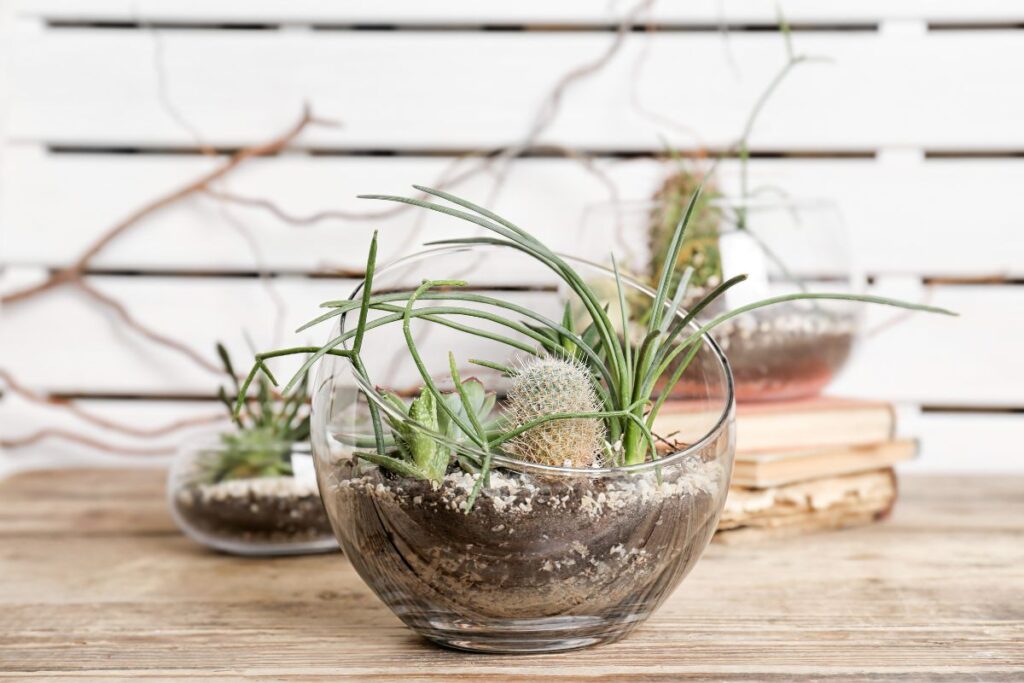
Contents
- 1 19 Best Terrarium Plants For Low Light
- 1.1 Nerve Plant
- 1.2 Lightning Jewel Orchid
- 1.3 Philodendron
- 1.4 Baby Tears Plant
- 1.5 Heart Fern
- 1.6 Peperomia caperata
- 1.7 Rhipsalis
- 1.8 Creeping Fig
- 1.9 Cryptanthus
- 1.10 Pothos
- 1.11 Drunkard’s-dream
- 1.12 Button Fern
- 1.13 Haworthia
- 1.14 Bird’s Nest Fern
- 1.15 Snake Plant
- 1.16 Artillery Fern
- 1.17 Gasteria
- 1.18 Aluminum Plant
- 1.19 Arrowhead Plant
- 2 Conclusion
19 Best Terrarium Plants For Low Light
Nerve Plant
You’ll love the nerve plant for its low-light requirements! The tropical perennial is a great choice for terrariums, with easy watering needs and minimal light exposure. It’s important to use potting soil specifically designed for terrariums, as the nerve plant requires moist but well-draining soil. When it comes to lighting, the nerve plant prefers medium to low light conditions – perfect for any darker spots in your home or office. Keep an eye on the soil though; too much water can lead to root rot. As long as you provide plenty of humidity and keep its light and moisture levels balanced, this beautiful little houseplant will thrive in your terrarium!
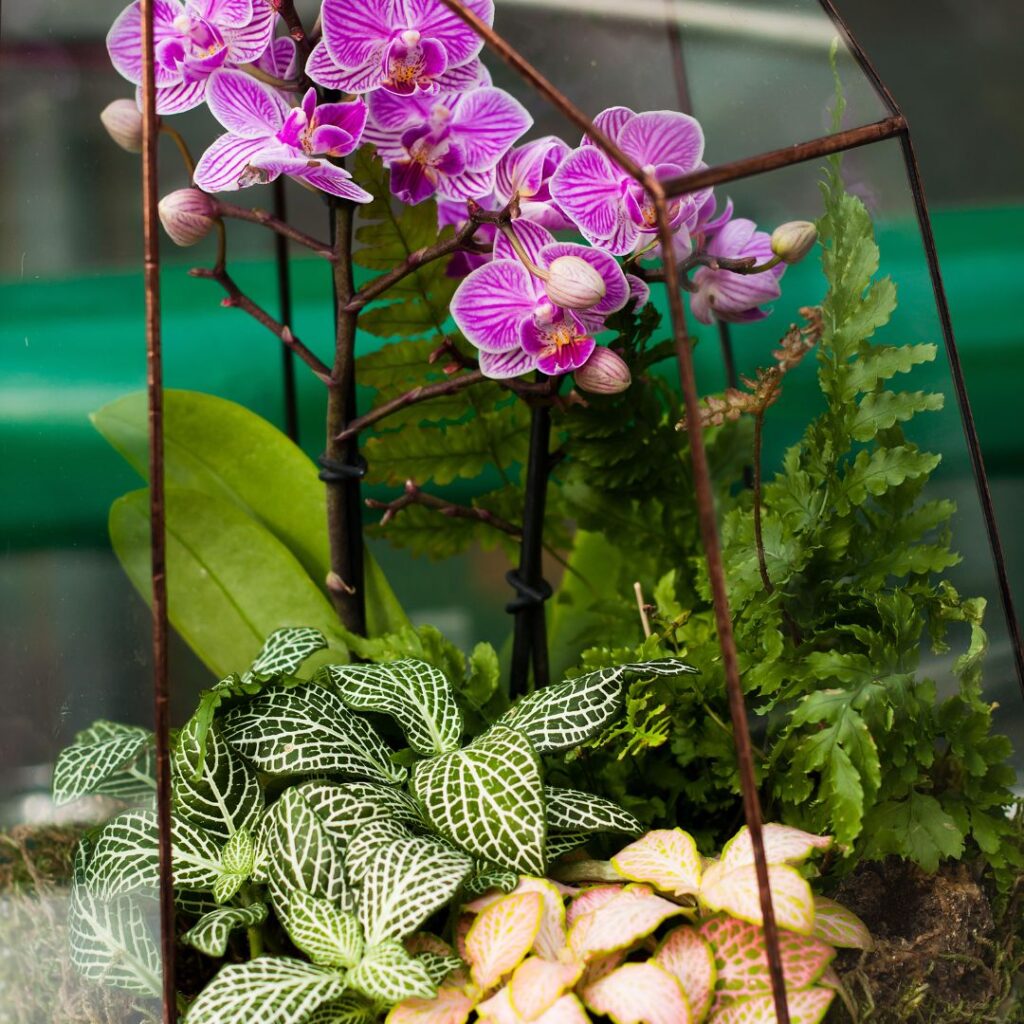
Lightning Jewel Orchid
The Lightning Jewel Orchid is a great choice for those with less light, as it can thrive in lower-light conditions. This plant also has minimal soil needs and is quite resistant to pests. It requires bright, indirect lighting but not direct sunlight. It’s best to keep the soil moist at all times without overwatering, and adding a small amount of fertilizer every month will help promote healthy growth. If the orchid begins to show signs of pest infestation such as yellow spots on the leaves, you should take appropriate steps for pest control right away.
Philodendron
Philodendrons are a great choice for anyone looking for a resilient plant that can withstand different lighting conditions. They are easy to care for and can thrive in low light, making them an ideal selection for terrariums. When cultivating philodendrons, planting tips should be followed so they can flourish. It’s important to make sure the soil is well-draining and the pot has plenty of drainage holes. The plant also needs indirect sunlight or bright, filtered light but not direct sun exposure. If you’re considering Philodendron as your terrarium plant of choice, make sure you have enough light sources to meet its requirements!
Baby Tears Plant
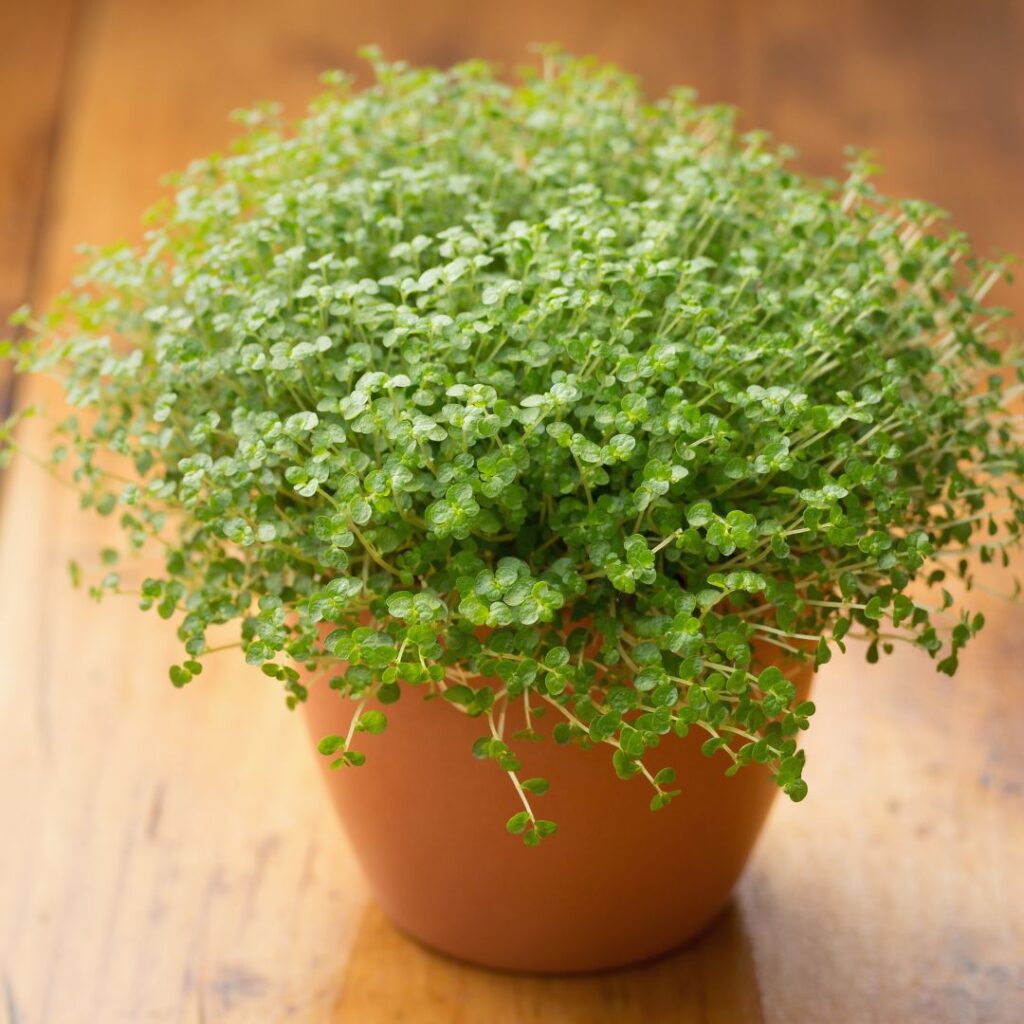
Baby Tears plants are a great option for those looking for a resilient plant that can withstand various lighting conditions. They thrive in low light, making them an ideal pick for terrariums. These plants also require very little maintenance; their temperature requirements range from 65 to 75 degrees Fahrenheit and they prefer moist soil and moderate water needs. Plus, they come in different sizes so you can choose the one that best fits your terrarium. Baby Tears are not only hardy but also aesthetically pleasing — their small green leaves add beautiful texture to any space!
Related Post:
25 Best Miniature Plants For Terrariums
Heart Fern
Heart Ferns are a great choice if you’re looking for a resilient plant that can tolerate various conditions and add visual interest to any space. They thrive in low-light settings, making them an ideal pick for your terrarium. Plus, they require minimal care allowing you to enjoy their beauty without too much fuss. The Heart Fern benefits from indirect sunlight or bright artificial lighting, so it’s easy to provide the necessary environment. Growing tips include regular misting and keeping the soil moist but not soggy. Care advice includes using a potting mix with peat moss or coco coir as well as fertilizing every two weeks during the growing season.
Peperomia caperata
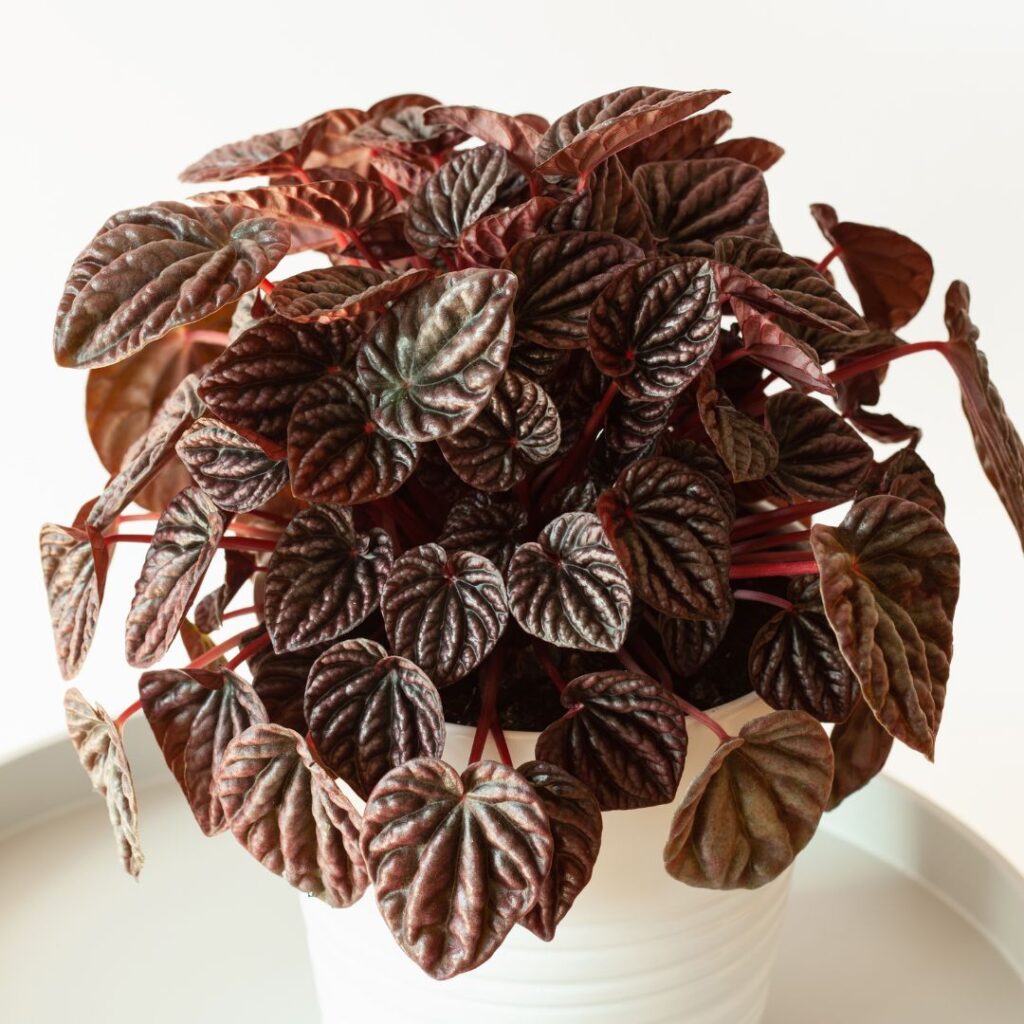
Peperomia caperata, also known as emerald ripple pepper, is a great choice if you’re looking for a plant that can tolerate various conditions and add a unique touch to any space. The care should involve keeping the soil damp and making sure it gets indirect sunlight. Propagation techniques such as leaf cuttings or division are easy ways to replicate this hardy species. As for nutrient requirements, avoid over-fertilizing this plant as too much fertilizer can burn its delicate leaves. Be sure to use an all-purpose liquid fertilizer at half strength every two weeks during the growing season.
Rhipsalis

Rhipsalis is a unique succulent with a delicate, trailing form that’s perfect for brightening up any space. It’s an ideal option for those who want to create a low-light terrarium. Rhipsalis care is fairly simple—it only needs watering once or twice a month and can handle temperatures between 55-85°F. When it comes to light requirements, partial shade and indirect sunlight are best. Furthermore, this plant is quite resilient and resistant to the most common diseases found in terrariums. If you’re looking for an easy-care plant that thrives in low light, consider adding Rhipsalis to your terrarium!
Creeping Fig
Creeping fig is a great choice for adding a bit of greenery to any space, as it offers beautiful foliage and requires minimal care. It’s perfect for low-light areas, as it tolerates shade well and its leaves can thrive even in indirect sunlight. Its benefits include easy propagation, making it ideal for first-time gardeners. Creeping fig care consists mainly of regular watering and occasional pruning to keep the plant healthy and promote growth. Propagating this plant is simple – just cut off a piece of the stem or root and place it in moist soil!
Cryptanthus

If you’re looking for an easy-care houseplant, cryptanthus is a great option! Cryptanthus are hardy and low-maintenance plants that require minimal care. They can tolerate low light levels, so they do best in medium to low-light areas. For optimal growth, keep the temperature between 65-75°F and provide it with indirect sunlight. When it comes to cryptanthus care, use well-draining potting soil and water when the top of the soil is dry to avoid over-watering. When repotting your plant remember to use fresh potting soil and choose a slightly larger container than the previous one.
Pothos
Pothos are a great houseplant choice if you’re looking for an easy-care option! You can brighten up your low-light terrarium with pothos and be sure of its safety. Watering your pothos is the most important part of caring for it. Make sure to water regularly, but don’t let the soil get too soggy. Letting the top two inches of soil dry out between waterings is best. With adequate watering, you’ll see your pothos thrive in low light conditions, where they will grow outwardly and climb up their supports.
Pothos care also includes pruning when needed to keep it from becoming overgrown or leggy. Finally, if you want to brighten up your pothos, give it some indirect sunlight! A few hours per week should do the trick and help promote healthy growth for this hardy houseplant.
Drunkard’s-dream
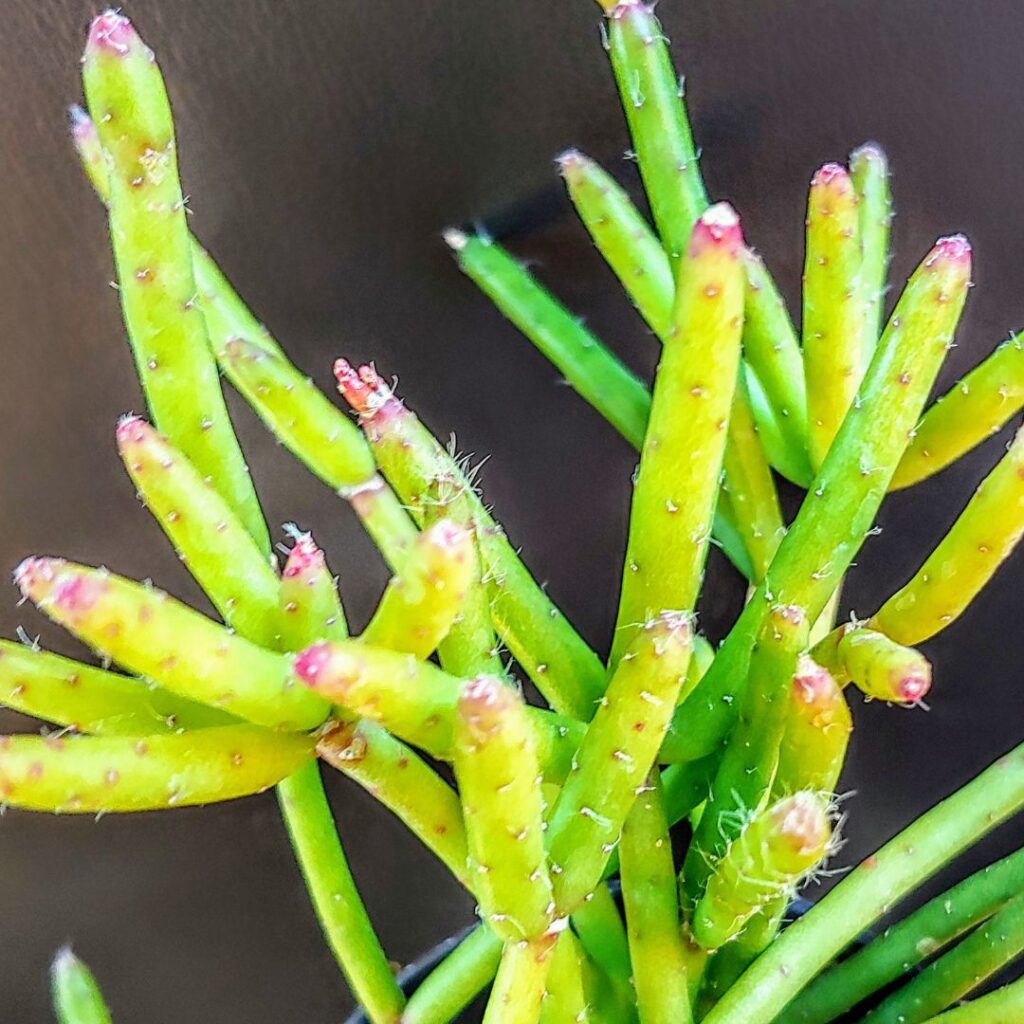
You’ll love the vibrant colors of Drunkard’s-dream plants! These easy-to-care-for plants are perfect for terrariums with low light, making them an ideal choice. With a bit of knowledge of propagation and care, you’ll be able to enjoy these bright and beautiful creatures. Drunkard’s Dream can be propagated by cuttings or division; both are fairly simple processes that even novice gardeners can accomplish.
Care is also minimal: water sparingly in cooler temperatures and more often in warmer climates, situate the plant in indirect sunlight, and mist regularly to maintain humidity. The benefits of having a Drunkard’s Dream plant in your terrarium include improved air quality due to its ability to absorb pollutants, attractive foliage with its unique leaves that look like stars, and overall visual appeal as it grows into lush mounds of green when placed in the right environment.
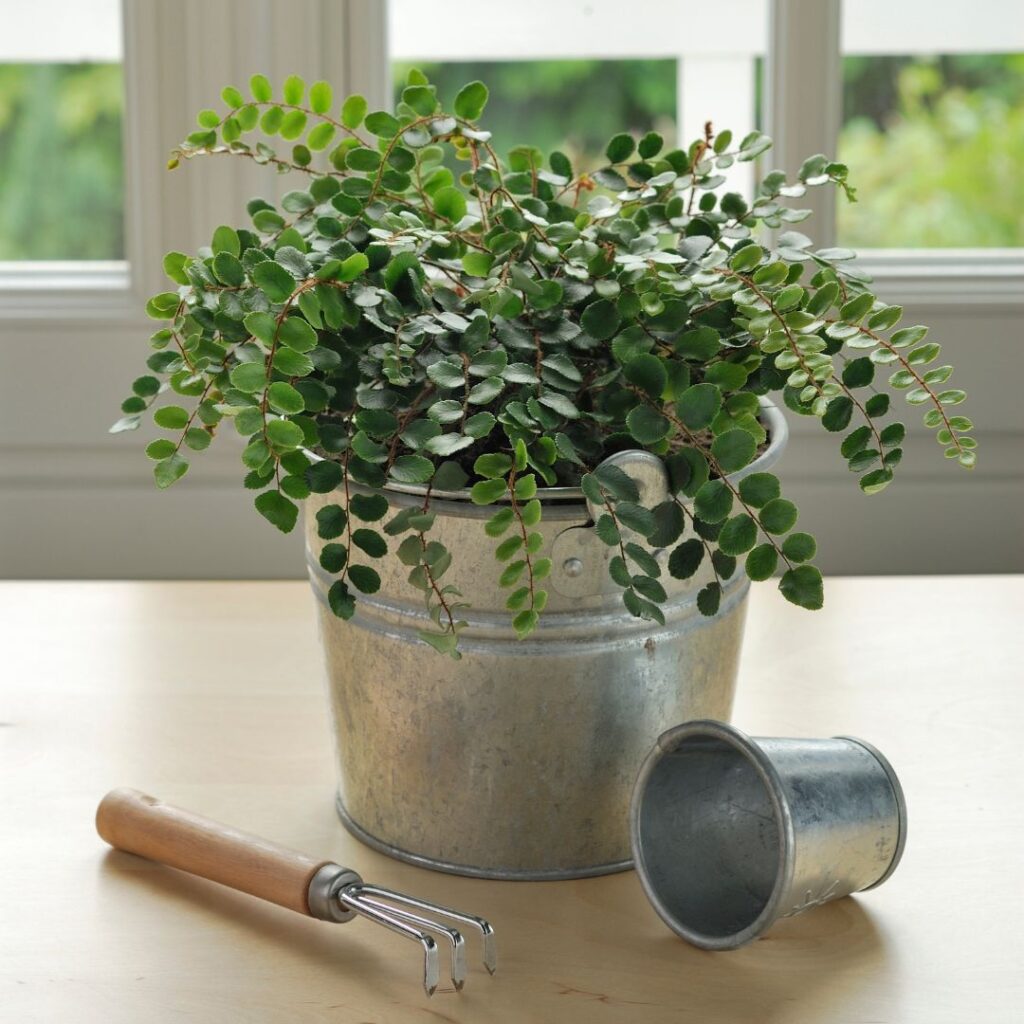
Button Ferns are an excellent choice for adding texture and color to your home, as their bright green foliage stands out against their black stems. They’re an ideal terrarium plant if you have low light conditions because they don’t need much sunlight to thrive. Plus, they require minimal care and maintenance.
To keep your Button Fern healthy, water it regularly but avoid overwatering as this can cause root rot. You may also want to mist the leaves occasionally to increase humidity levels in their environment. Propagation is easy too – simply take stem cuttings from existing plants and place them in moist soil or water until they start producing new roots.
Haworthia
If you’re looking for another low-light terrarium plant, Haworthia may be the perfect addition. These succulents are incredibly easy to care for – all you need is a little bit of bright indirect sunlight or even fluorescent lighting and they’ll thrive. When it comes to propagation, Haworthia can easily be divided if you want more plants! There are also many varieties of this plant available, so you can find one that perfectly fits your vision. Whether it’s the variegated Zebra Cactus or the Spider Aloe, there’s a Haworthia variety out there that will bring your terrarium to life!
Bird’s Nest Fern

The Bird’s Nest Fern makes a great addition to any indoor space, adding lush greenery without requiring too much effort. Its low-light requirements make it an ideal choice for even the dimmest corners of your home, and its ease of care makes it perfect for anyone looking to bring some greenery into their life with minimal effort.
Bird’s Nest Fern care is relatively easy — you just need to keep the soil moist but not soggy and mist the leaves regularly. For those looking for a bit more of a challenge, Bird’s Nest Fern Propagation allows you to easily divide existing plants or propagate from spores. There are many benefits to having a Bird’s Nest Fern in your home; they can help filter out pollutants, add humidity to dry air, and require little maintenance overall.
Snake Plant
If you’re looking for a terrarium plant that can handle low light, the snake plant is your perfect choice! It’s an easy-to-care-for evergreen perennial with striking foliage that comes in many varieties, so you’ll definitely find one that fits your style. Snake plants require minimal maintenance and can even be propagated at home if desired. All you need to do is provide them with bright indirect light, water occasionally when the soil is dry, and use a well-draining potting mix.
Artillery Fern
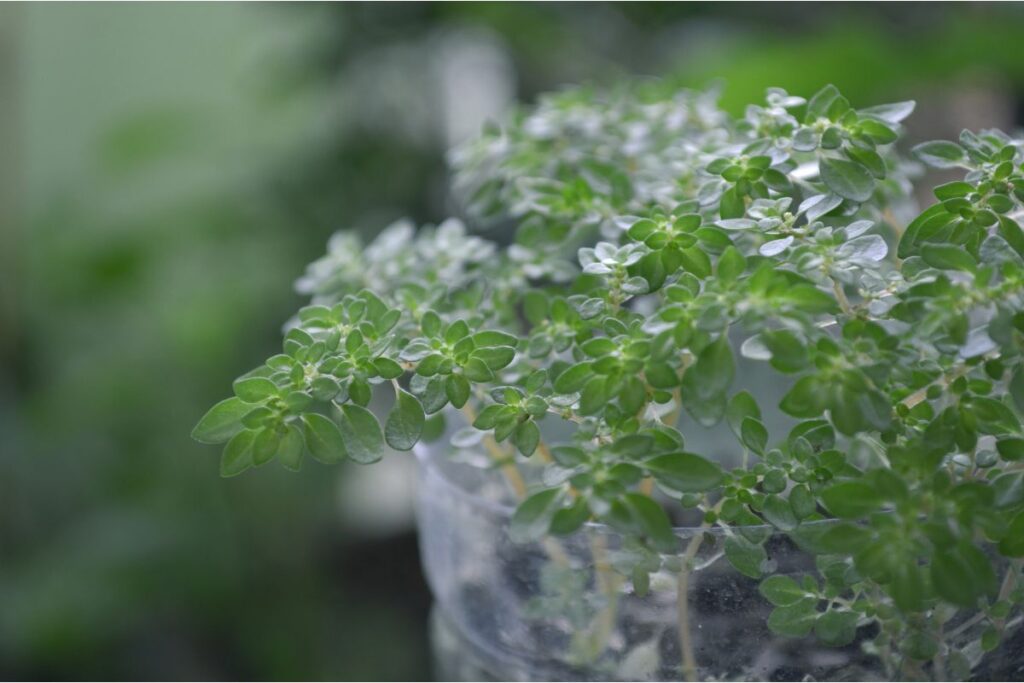
You’ll love the artillery fern’s lush foliage and delicate fronds, making it an excellent choice for adding texture to your terrarium. This stunning plant is easy to care for, with watering needs that are moderate and lighting requirements of medium to low light. To help it flourish, make sure you use soil that has good drainage capabilities as this plant cannot handle wet or soggy conditions. Artillery Ferns can survive in high-humidity environments so they make an excellent addition to any terrarium. This type of fern will thrive when provided with plenty of indirect sunlight and kept moist without being waterlogged. If you’re looking for a hardy plant that adds interest and texture, the Artillery Fern is an excellent choice!
Gasteria
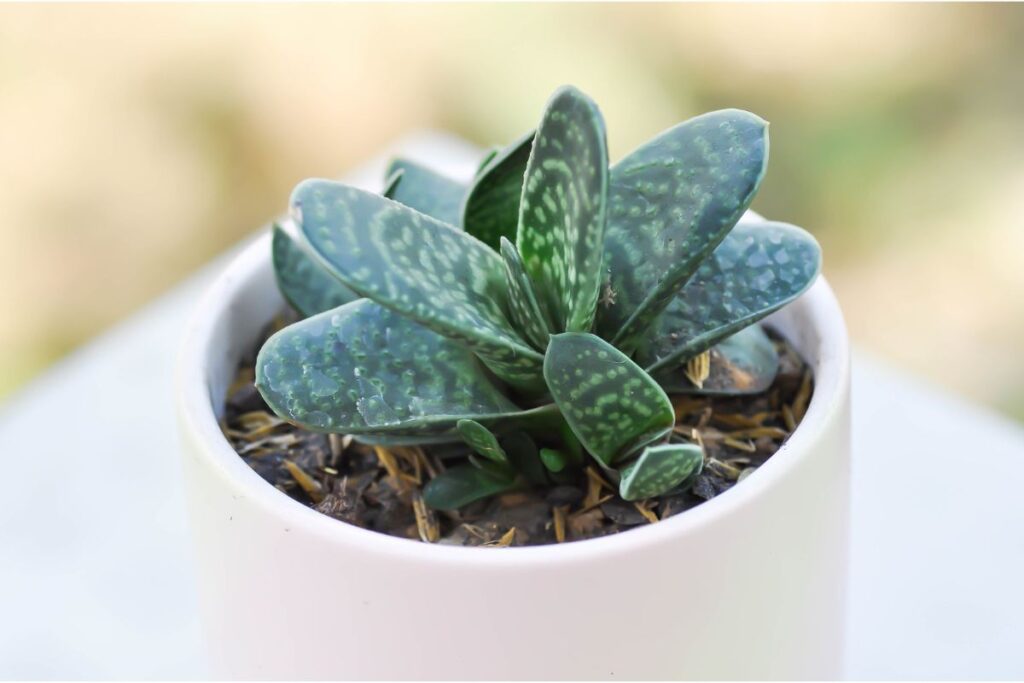
Gasteria plants are perfect for adding texture to a terrarium with their lush foliage and delicate fronds. As an ideal low-light plant, Gasterias thrive in indirect sunlight or partial shade. When caring for these plants, use a well-draining soil mix and water regularly to keep the potting mixture moist but not soggy. To propagate new Gasterias, divide mature plants during repotting or use stem cuttings from existing plants. There are many varieties of Gasteria available, including the Compacta, Little Warty, and Bowie hybrids that boast interesting leaf patterns.
Aluminum Plant
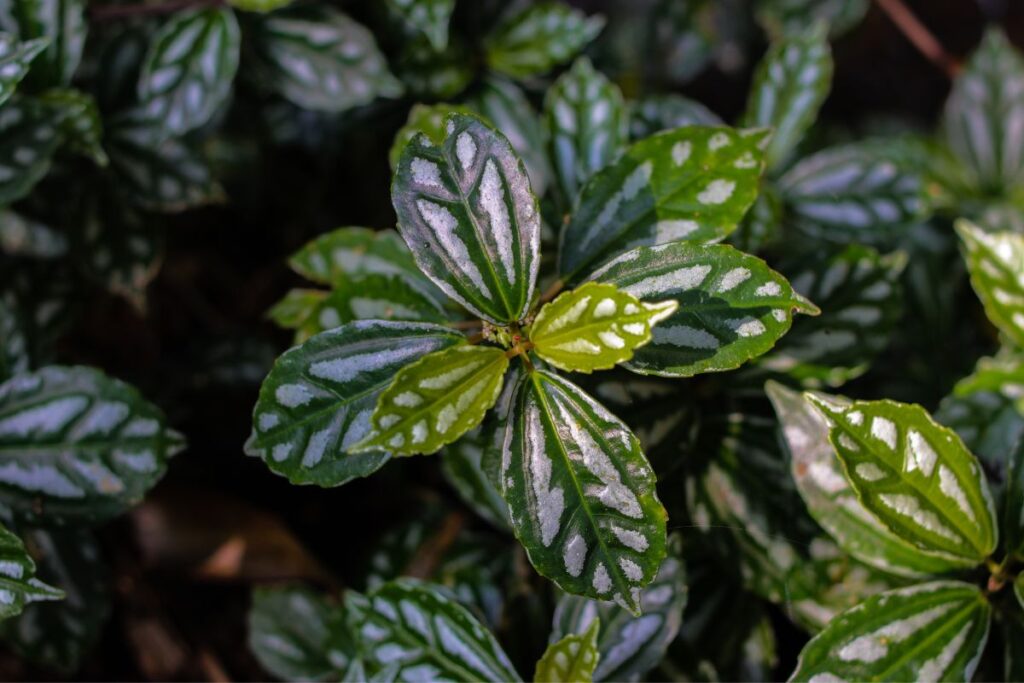
Moving on from Gasteria, Aluminum Plant (Pilea cadierei) is another great choice for terrariums with low light. It’s easy to take care of and can be propagated quickly by taking stem cuttings. When it comes to Aluminum Plant care, light requirements are fairly minimal; it can tolerate anything from bright indirect sunlight to even dim artificial lighting. When giving your plant the right amount of light, you’ll be rewarded with glossy green foliage and attractive clusters of small white flowers during the summer months.
Propagation is pretty simple: just use a pair of scissors or garden clippers to cut a stem that contains at least two sets of leaves. Place the clipping in moist potting soil and keep it well-watered until roots begin to form.
Arrowhead Plant

Arrowhead Plant (Syngonium podophyllum) is an excellent choice for terrariums as it’s easy to care for and can quickly be propagated. It thrives in low light, making it ideal for areas with limited natural sunlight. For optimal health, you’ll need to give your Arrowhead Plant bright indirect light. When potting the plant, use soil that drains well and provides regular watering. You’ll also want to provide a humid environment with temperatures between 65-85°F (18-29°C). To ensure the longevity of your plant, monitor its growth and adjust its care accordingly.
Conclusion
You’ve now seen the best terrarium plants for low light. From the nerve plant to the arrowhead plant, you’re sure to find an excellent option for your needs. Each of these plants will help bring life and beauty into your home – without needing too much light. So get started planting and enjoy!
